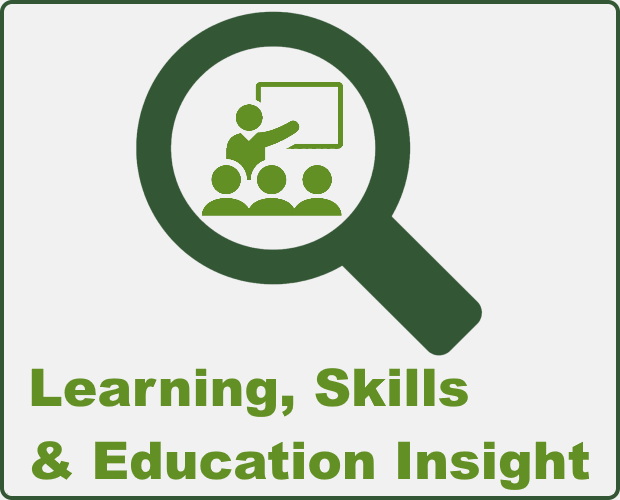The Duty of Education in Building a Comprehensive Educational Site for All
The duty of education and learning in developing a thorough instructional site for all is significantly identified as necessary in today's diverse culture. This query invites further expedition into the dynamics of educational equity and effectiveness.
Relevance of Inclusivity

When instructional sites prioritize inclusivity, they produce a culture of belonging where every student feels valued and encouraged. This setting encourages energetic engagement, cooperation, and common regard amongst learners, helping with stronger interpersonal partnerships. Additionally, comprehensive practices add to improved academic results, as students are more most likely to engage with the curriculum when they see their identities shown and appreciated.
Furthermore, inclusivity prepares trainees for a varied labor force and society, furnishing them with the abilities needed to browse and add favorably to different atmospheres. By accepting inclusivity, educational websites not only meet their honest commitments but also improve the educational landscape, ultimately benefiting trainees, teachers, and the community at large. Consequently, cultivating inclusivity is essential for the development of equitable and effective education and learning.
Leveraging Innovation for Knowing
Including modern technology into academic sites enhances inclusivity by providing diverse learning tools and sources customized to specific needs. Digital systems permit the combination of multimedia sources, such as video clips, interactive simulations, and gamified discovering experiences, which provide to differing discovering styles. This ease of access makes certain that students can engage with content in manner ins which reverberate with them, promoting a much deeper understanding of subject issue.
Additionally, technology facilitates real-time responses and personalized knowing pathways. Through flexible understanding modern technologies, educational websites can assess individual efficiency information, allowing customized content distribution that fulfills each learner's pace and proficiency degree. This strategy not only improves engagement yet also empowers students to take possession of their learning journey.

Ingenious Teaching Techniques

One popular approach is project-based learning (PBL), which urges trainees to take part in hands-on projects that deal with complicated inquiries or challenges. This technique promotes collaboration, creativity, and analytical abilities, every one of which are crucial in today's labor force. Flipped classrooms have actually acquired grip, where conventional learning is turned around; pupils examine lecture materials at home and involve in interactive activities throughout course time, advertising much deeper understanding and retention.
Another substantial pattern is the integration of gamification into education. By integrating game elements right into lessons, educators inspire learners and improve involvement via competition and benefits. Furthermore, differentiated guideline tailors finding out experiences to fulfill the varied requirements of students, enabling for personalized learning paths that adapt to differing passions and capacities.
Collaboration and Area Building
Often, partnership and area structure are identified as vital components of efficient education and learning, cultivating a comprehensive and helpful knowing setting. These components develop a structure where trainees, teachers, and area participants can engage in meaningful communications, enhancing the academic experience for all participants.
Collaboration urges the sharing of concepts, sources, and proficiency, promoting a richer discovering process. This dynamic helps to break down silos within the academic environment, promoting interdisciplinary methods that can deal with complicated problems. By working with each other, instructors can develop ingenious curricula that mirror diverse perspectives while fulfilling the varied requirements of pupils.
Area building goes hand in hand with partnership, as it grows a feeling of belonging these details amongst all stakeholders. They are a lot more most likely to invest time and sources into collective objectives when individuals feel attached to their educational neighborhood. This shared dedication can lead to increased inspiration, enhanced academic outcomes, and better retention prices.
Moreover, cultivating cooperation and area structure can additionally expand past the classroom, entailing moms and dads, local organizations, and businesses. These partnerships can provide assistance and sources that enhance instructional chances, ultimately adding to a much more comprehensive instructional site for all.
Gauging Success and Effect
The efficiency of collaboration and area structure in academic setups can be examined through numerous metrics that measure success and influence. These metrics may consist of student involvement levels, scholastic performance, retention prices, and neighborhood feedback. By utilizing measurable data such as test ratings and graduation prices, educational stakeholders can assess the total efficiency of joint initiatives.
In addition, qualitative evaluations, such as studies and focus groups, provide useful insights right into participant contentment and regarded benefits of community-building Discover More tasks. Routinely tracking find out here these metrics enables educators to determine locations of stamina and those needing enhancement, ensuring that collective initiatives remain focused and impactful.
Furthermore, longitudinal research studies can aid measure the long-lasting results of instructional partnerships on trainee end results and community development. These assessments can expose patterns over time, showing just how continual collaboration promotes a setting helpful to discovering and development.
Ultimately, specifying success in instructional setups requires a diverse technique, incorporating both qualitative and quantitative information. By continuously examining the influence of cooperation and community-building efforts, educational sites can refine their approaches, ensuring they meet the diverse demands of all stakeholders entailed.
Conclusion
In verdict, education offers as a foundation in developing a detailed instructional website that prioritizes inclusivity for all learners. Inevitably, the dedication to inclusivity and equity prepares pupils for success in a varied and interconnected globe, strengthening the transformative power of education.
The importance of inclusivity in academic sites can not be overstated, as it plays a crucial duty in cultivating a knowing environment that accommodates diverse histories and capabilities. Inclusivity makes certain that all students, no matter of their socio-economic condition, ethnic culture, sex, or learning abilities, have fair accessibility to instructional sources and possibilities.When instructional websites focus on inclusivity, they create a society of belonging where every pupil really feels valued and equipped. By welcoming inclusivity, instructional sites not only meet their moral obligations but likewise improve the academic landscape, eventually benefiting students, teachers, and the area at huge.The performance of partnership and neighborhood building in educational setups can be analyzed via different metrics that measure success and influence.